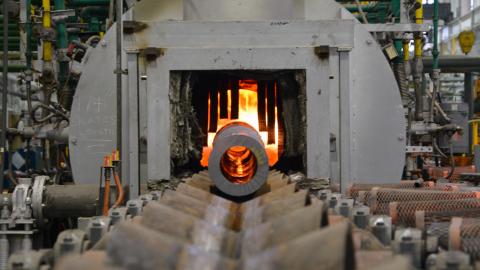It’s now almost trite to point out the cracks in the foundation of the US defense industrial base (DIB). Many facilities are over a half century old, filled with outdated equipment, unable to meet production requirements, and often dependent on minerals and chemicals produced mainly by our adversaries. The issue is particularly acute for missiles and munitions, both the weapons needed for today’s fight in Ukraine and future capabilities such as hypersonic weapons.
However, there is one promising development that has largely gone under the radar: The Defense Department’s recent suggestions that it is poised to create a “munitions campus,” as well as other campuses for other sectors, such as microelectronics, may be a step toward solving a host of DIB problems.
The Pentagon’s Defense Manufacturing Capability Expansion and Investment Prioritization (MCEIP) office — quite a mouthful! — proposes to address some of these challenges by creating a network of “campuses” consisting of testing and manufacturing facilities. The campus design is a public-private partnership centered around a hub and spoke model. At the center of the hub would be capital-intensive, government-supported facilities needed to test weapons and components. The spokes around this hub would be a variety of private companies that could use these expensive and specialized tools and facilities to develop materials needed by our armed forces, such as key chemical formulations called energetics.
Such a campus would have several strengths.
First, it provides a missing link in the DIB. It’s not just about money. There is a requirement for a physical environment that allows new innovations to flourish and find their way quickly into the weapons needed by warfighters. This requires testing. As the Energetics Technology Center (ETC) and Defense Department’s recently released National Energetics Plan points out, such testing is critical for moving a technology from one readiness level to the next. As the ETC experts put it, new materials “must be tested and qualified, and the necessary processes are expensive, time-consuming, and arguably outdated.”
Testing these compounds is not like testing software. Components of munitions are volatile: they are chemicals, that in various formulations, ultimately are designed to explode. Without the ability to test new compounds, you can’t realize new innovations. Thus, the creation of testing facilities means faster innovation for DoD.
Second, relatedly, it would enable innovation by integrating the efforts of smaller companies around the country. Common facilities and testing sites significantly reduce costs from these firm’s balance sheets – and could drive collaboration. If a small company has an idea that could pay dividends to the US military, with this approach they would be more able to afford to experiment and try new ideas. This is particularly important for startup firms that may not have much cash on hand to invest in expensive testing facilities.
Third, the munitions campus concept plays to the US government’s strengths. DoD already runs several testing facilities in a range of areas, including for instance, a “Fort Renewable” that allows early-stage companies to test their ideas related to more resilient electrical grids. US national laboratories around the country allow users from universities and the private sector to test innovations and carry out experiments in facilities that would otherwise be prohibitively expensive for one company to build. This is relevant to a range of other sectors too, including space, which requires testing and evaluation of components like large vacuum tubes, and hypersonics, which requires testing to understand how various materials perform.
Fourth, these common facilities are a step toward onshoring domestic sources of critical chemicals and propellants, because providing a place where R&D and testing can take place can encourage the production of new compounds at scale. The existing inhospitable environment to testing and producing energetic materials has contributed to driving US producers out of the country or out of business.
Finally, DoD’s campus concept also gets around the “not in my back yard” problem. Many Americans understandably don’t consider a munitions testing or manufacturing facility as a local upgrade. And permitting and regulatory issues are serious impediments to building new facilities. However, if the federal government encourages states to identify areas where a campus could be located, it will get bidders who want to compete for the facility. It is not surprising that states like Texas, Indiana, New Mexico, Maryland, and Arizona are enthusiastically creating hubs of manufacturing and innovation.
DoD’s campus model could be a big play. It creates a collaborative space for R&D as well as the testing and prototyping of new systems that our military needs. It certainly does not address all of the problems in our DIB. But the concept is a step forward in addressing some of the underlying problems that hamper the modernization of our weapon systems.
The challenge, of course, is actual implementation. Too often, that’s where things break down.
But if the munitions campus — and others like it — is built in a timely fashion, it offers an approach that even skeptics of industrial policy might get behind.














